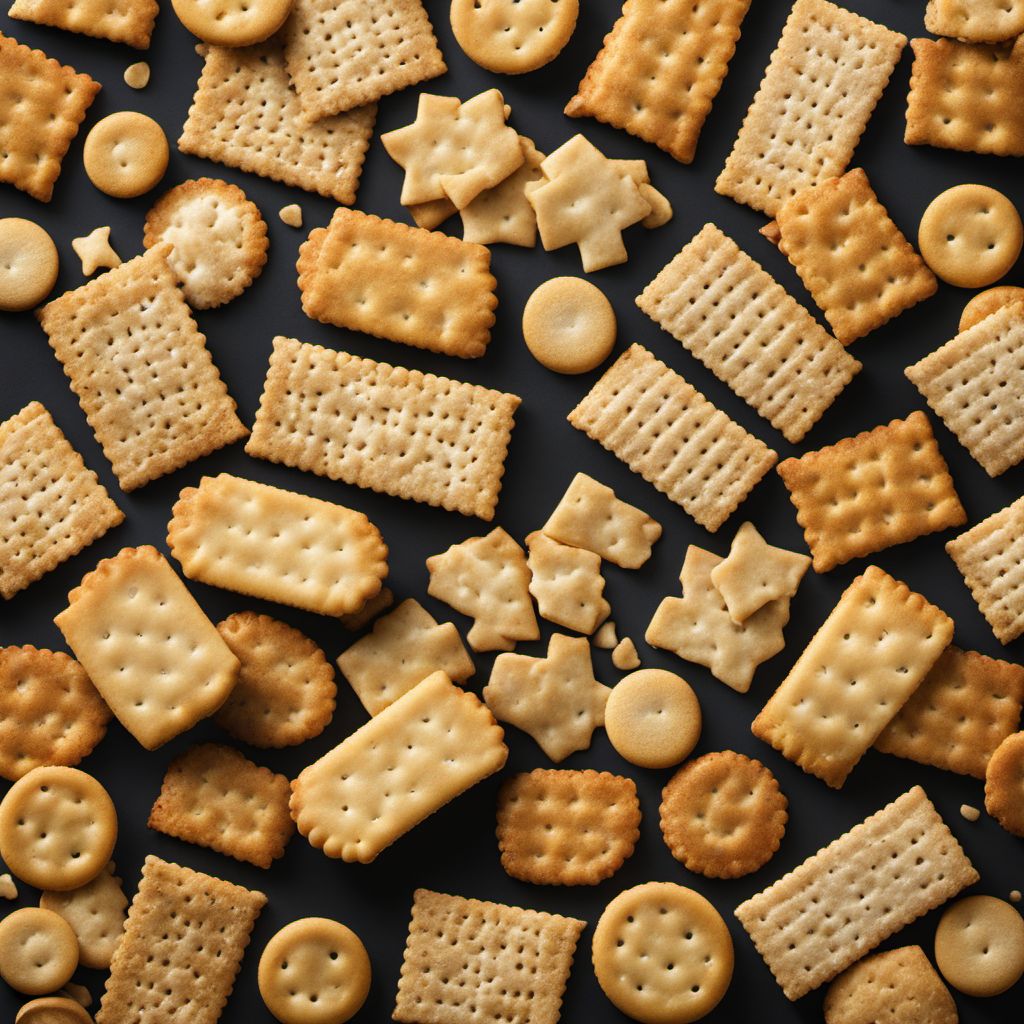
Ingredient
Crackers and breadsticks
"Crispy Delights: Exploring the World of Crackers and Breadsticks"
Crackers and breadsticks are dry, crispy snacks made from flour, water, and other ingredients. Crackers are thin and flat, while breadsticks are elongated and often twisted. They have a satisfying crunch and come in various shapes, sizes, and flavors. Crackers can range from plain and savory to sweet and seasoned, while breadsticks are typically savory and may be seasoned with herbs or spices. Their texture can vary from light and airy to dense and crunchy, depending on the recipe and baking process. Both crackers and breadsticks are commonly enjoyed as standalone snacks or paired with dips, spreads, cheeses, or cured meats.
Origins and history
Crackers have a long history, dating back to ancient times. The concept of unleavened bread, which eventually led to the creation of crackers, can be traced back to ancient Egypt. Breadsticks, on the other hand, originated in Italy during the 14th century. They were initially made as a way to utilize leftover bread dough, which was stretched and baked into thin, crispy sticks. Over time, both crackers and breadsticks gained popularity and spread to different parts of the world, evolving into the diverse range of options available today.
Nutritional information
Crackers and breadsticks are generally low in fat and calories, making them a lighter snack option. They can provide carbohydrates for energy and may contain small amounts of protein and fiber, depending on the recipe and ingredients used.
Allergens
Some crackers and breadsticks may contain allergens such as wheat, gluten, soy, or dairy. It is important to check the ingredient list and packaging for any potential allergens before consuming.
How to select
When selecting crackers and breadsticks, look for packages that are well-sealed and free from any signs of moisture or damage. Opt for products with a longer shelf life to ensure freshness. For breadsticks, choose ones that are evenly baked and have a golden color.
Storage recommendations
To maintain the freshness and crispness of crackers and breadsticks, store them in airtight containers or resealable bags in a cool, dry place. Avoid exposing them to moisture, as it can cause them to become stale or lose their crunch.
How to produce
Amateur bakers can produce crackers and breadsticks by following simple recipes that involve mixing flour, water, and other ingredients, rolling out the dough, and baking until crispy. There are numerous recipes available online or in cookbooks that cater to different flavor preferences and dietary restrictions.
Preparation tips
Crackers and breadsticks can be enjoyed as a standalone snack or paired with various dips, spreads, cheeses, or cured meats. They can also be crushed and used as a breadcrumb substitute in recipes or as a crunchy topping for salads or soups. To enhance their flavor, consider brushing breadsticks with olive oil and sprinkling them with herbs or spices before baking. For a sweet twist, try dipping plain crackers in melted chocolate or spreading them with fruit preserves.
Culinary uses
Crackers and breadsticks are commonly used as appetizers, snacks, or accompaniments to cheese and charcuterie boards. They can also be used as a base for canapés or as a crunchy element in salads and soups.
Availability
Crackers and breadsticks are widely available in grocery stores, supermarkets, and specialty food stores worldwide.



